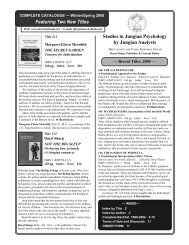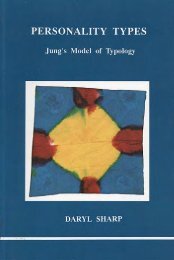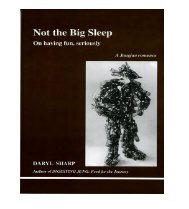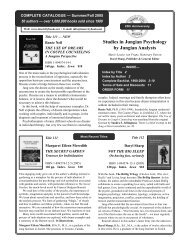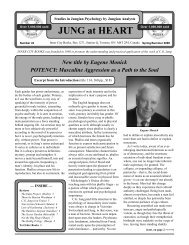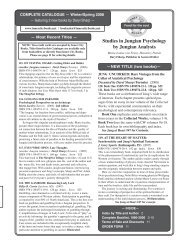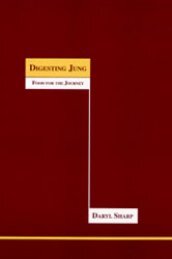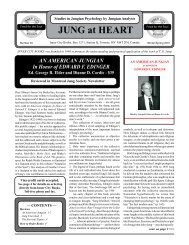Chicken Little: The Inside Story (A Jungian ... - Inner City Books
Chicken Little: The Inside Story (A Jungian ... - Inner City Books
Chicken Little: The Inside Story (A Jungian ... - Inner City Books
Create successful ePaper yourself
Turn your PDF publications into a flip-book with our unique Google optimized e-Paper software.
<strong>The</strong> Experiment 111<br />
No team of mountain climbers set to with more vigor than did<br />
our little troupe. No expedition up the Orinoco was ever better prepared.<br />
It was absolutely astounding how much stuff was in Brillig<br />
and Norman’s second trunk, which up till now had not been<br />
opened. Indeed, that they’d lugged it all this way I took as an extraordinary<br />
gesture of faith.<br />
Rachel blanched when she saw the cables.<br />
“Where’s the main switch box?” asked Norman.<br />
She recovered and showed the way.<br />
While Norman busied himself with electrical connections, Brillig<br />
and Arnold positioned a large tractor tire inner tube in the middle<br />
of the basement floor. I inflated it with a bicycle pump they’d<br />
brought. Together we built a four-foot square box out of plywood,<br />
using two-inch blocks at the corners so the sides were a foot high,<br />
and covered the bottom with a thin layer of carpet material. A piece<br />
of wood was nailed along one edge of the box to hold the laser. We<br />
centered the box on top of the inner tube and filled it with fine silica<br />
sand to about two inches from the top.<br />
“<strong>The</strong> more sand,” explained Norman, “the better the insulation<br />
against vibration.”<br />
Next we fashioned tubes of various sizes to hold the optical<br />
com-ponents. <strong>The</strong>se tubes were cut from black plastic waste pipe,<br />
of the kind used by plumbers, two to four inches in diameter and<br />
fourteen to eighteen inches long, with some larger ones to use as<br />
extensions. Rachel set up a card table, on which she and Arnold<br />
glued the various mirrors and lenses to corks, which were then fitted<br />
snugly into the tops of the tubes.<br />
Norman positioned the tubes firmly in the sand, with a running<br />
commentary of what he was doing and why.<br />
“<strong>The</strong> single ray of light from the laser will hit this partially silvered<br />
piece of glass—the beam splitter—which divides the laser<br />
beam into two. When the beam hits the glass, a small part of it will<br />
be reflected off the front surface; the amount can be adjusted by<br />
changing the angle of the glass to the light coming from the laser.<br />
This is called the reference beam, which will be spread by this lens<br />
and directed by this mirror to evenly cover the light-sensitive emulsion<br />
on the holographic plate.



